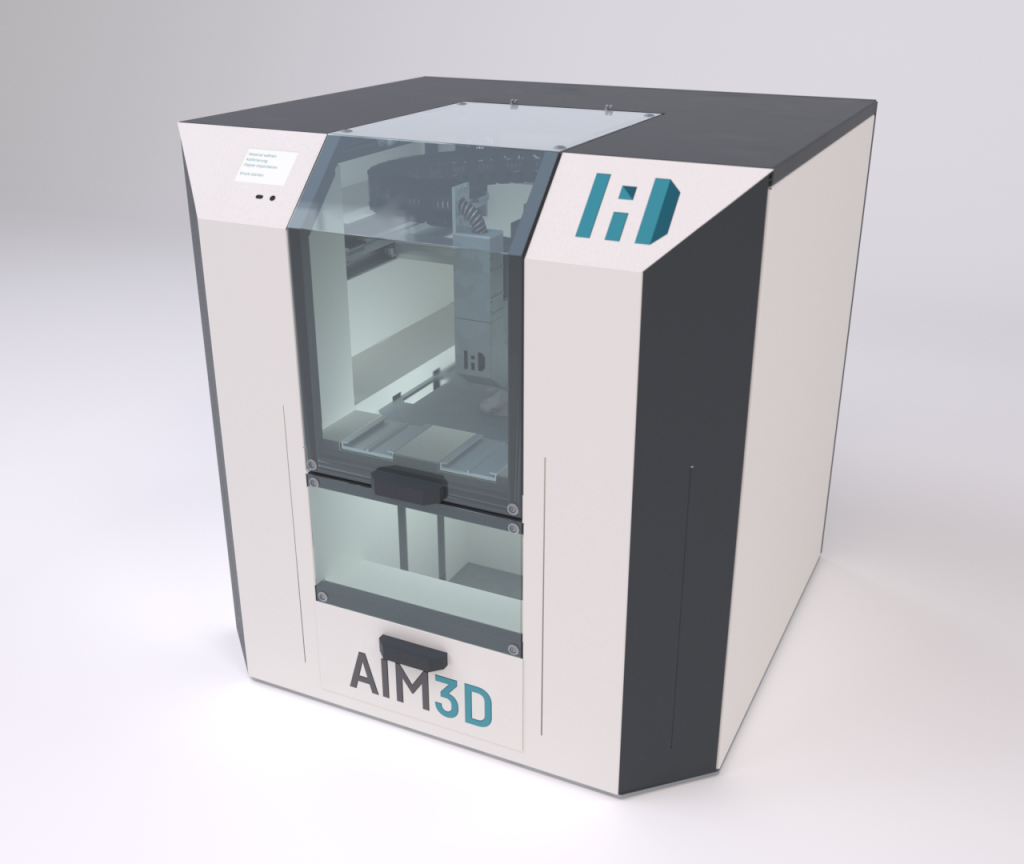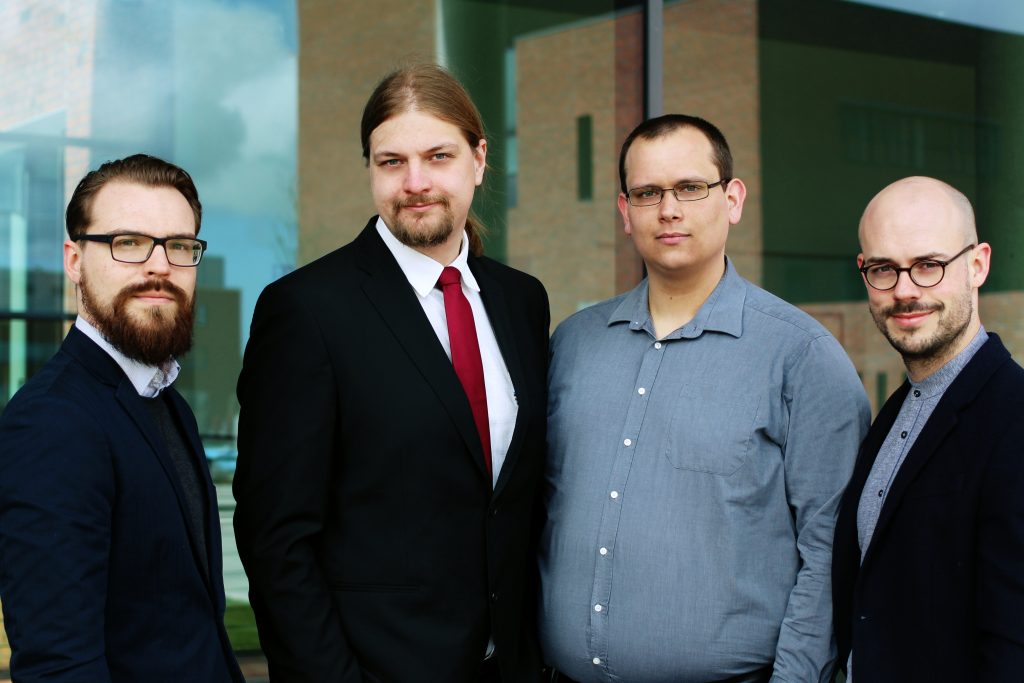German metal 3D printing OEM AIM3D has unveiled what is intended to be a more cost effective and efficient 3D printing system capable of printing a variety of materials including metals, ceramics and plastic.
Consisting of an ExAM255 3D printer and a EXSO 90 de-binding and sintering machine, the system utilises a Composite Extrusion Modelling (CEM) process, inspired by the manufacturing process of injection molding.
The CEM Process and post-processing
The CEM process begins with placing injection molding pellets into a compartment on the side of the machine. The pellets are then heated to high temperatures, and fed through the extruder. The layer by layer printing process thereafter resembles the fused filament fabrication process of used for PLA.
If the component is metal, it needs to be further processed, since the layering process will have used plastics as a binding agent for the metal layers. Within the EXSO90 machine, the component is heated just below its melting point. At this temperature, the plastic that binds the metal pellets together vaporizes, and the metal itself joins together to form the final product. During this process, the component shrinks by about 4%.

Soft rock sintering to Heavy metal extrusion
Key to the CEM process is AIM3D’s CEM E-1 extruder, developed over a number of years is capable of processing almost any injection molding granulate up to a length and diameter of 3 mm.
The high performance materials used for the extruder means that it is extremely wear resistant, and capable of handling stainless steel, hard metal, non-ferrous metals or ABS, and PLA.
An affordable metal printing alternative
AIM3D is a company founded by researchers at the University of Rostock to market their Composite extrusion modelling 3D technology. AIM3D’s team are also prize winners in the forthcoming formnext Startup Challenge 2017.
AIM3D’s CEM process could be used in the future for tooling and by spare parts manufacturers, as an affordable alternative for applications less demanding than existing powder bed fusion techniques of 3D printing.
Others are also using pellets for 3D printing. For example the Delta WASP 3MT uses pellets, and RichRap proposed a Universal Pellet Extruder for 3D printing PLA.

ExAM255 Technical Specifications
Build volume – 255 x 255 x 255 mm (10 x 10 x 10 inch)
Possible layer thickness – 20, 50, 100, 200, 500 μm
Top printing speed – 225mm/s
Nozzle size range – 1.5 to 0.4 mm
Repeatability – XY combined – 50 μm, Z – 5 μm
Material supply – automatic via an internal compressor or external compressed air supply
Levelling of the build tray – automatic, laser-supported (1 μm resolution in the Z-di-rection, 50 μm in the XY-direction)
Heating of the build tray – up to 120 °C
Extruders – two CEM-E 1 extruders
EXSO 90 Technical Specifications
Individual sinter programs – 6 (30 more via USB)
Internal recorder function – 72 hours
Temperature – ≤ 1350 °C
Heating rate – ≤ 1000 K/h
Gas quantity – ≤ 5 l/min (@1,5 bar ± 0,3)
Weight – 87 kg
For more information on innovative 3D printing processes, subscribe to our free 3D Printing Industry newsletter, follow us on Twitter, and like us on Facebook.
Featured image shows the ExAM255 3D CEM printer with pellets.


